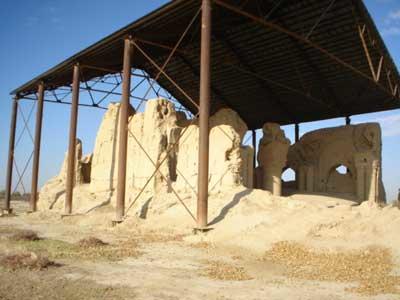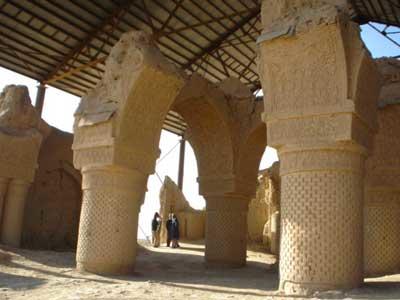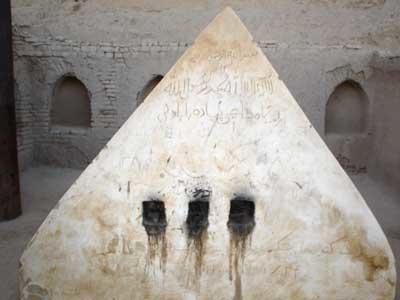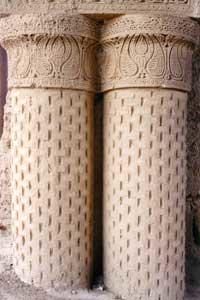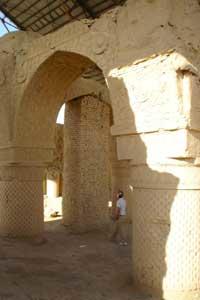Haji Piyada Mosque (Noh Gumbad)
The Haji Piyada Mosque was built in the second half of the ninth century, only two centuries after the establishment of Islam and immediately following its arrival in Central Asia. Located in northern Afghanistan, the mosque measures 65 by 65 feet (20 by 20 m), a modest but architecturally rich religious structure. The mosque derives its alternate name, Noh Gumbad, from the nine cupolas that once covered it. These brick domes collapsed due to aging materials. Only one of the arches that held them still stands. The stucco ornamentation that remains etched into the arch and piers is a union of motifs of the Samanid and Abbasid styles.
Haji Piyada was rediscovered in the 1960s and though cursory research was conducted in the early 1970s, very little has been done in the past few decades because of civil unrest in Afghanistan. The site holds extraordinary potential for archaeological and architectural investigation but has been made vulnerable by looting, erosion, and lack of proper maintenance.
2006 World Monuments Watch
Haji Piyada Mosque was included in the 2006 World Monuments Watch and was WMF’s first conservation field project in Afghanistan. WMF worked with UNESCO and other international preservation agencies as well as Afghan officials to conceive a long-term conservation plan.
Though a roof shelter had already been placed over the building to protect it from harsh weather, a fence was also needed to prevent illegal excavation and looting. A structural assessment was conducted and a project for emergency stabilization of the only arch still standing was prepared. The project, conducted with Associazione Giovanni Secco Suardo and the Aga Khan Trust for Culture, included the conservation of the plaster decorations and the stabilization of the arch. The project was completed in spring 2010.
Haji Piyada Mosque is the oldest known Islamic building in Afghanistan and one of the earliest structures in the entire eastern Islamic world. There seem to be no similar surviving structures from that time period, endowing the mosque with unparalleled cultural and architectural significance.
Preserving Afghan heritage has been made all the more important by the recent sociopolitical challenges in the country. In the last 40 years, Afghanistan has endured invasion by the Soviet Union, the rise of the Taliban, military occupation, and internal regional and tribal conflict. With this project, WMF hopes to raise awareness of the cultural heritage of Afghanistan and encourage a new generation of conservators in the region.


